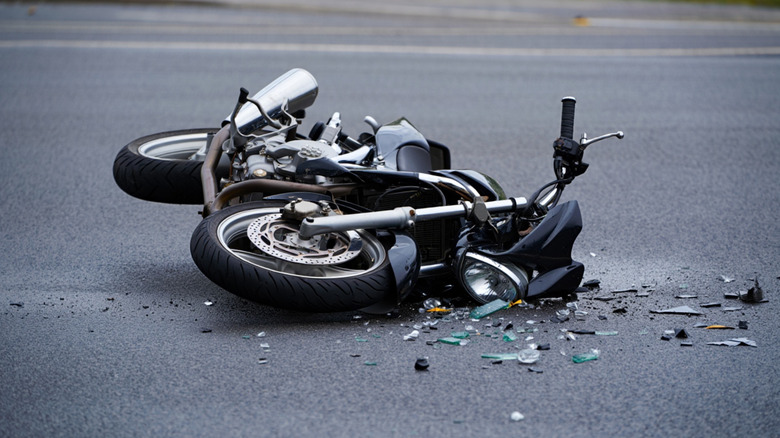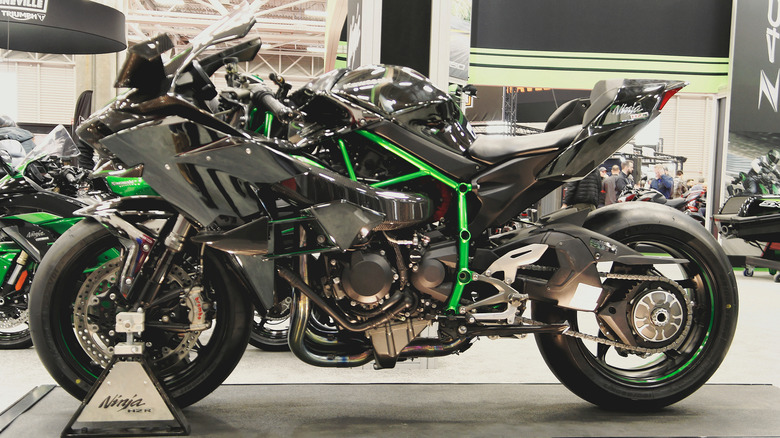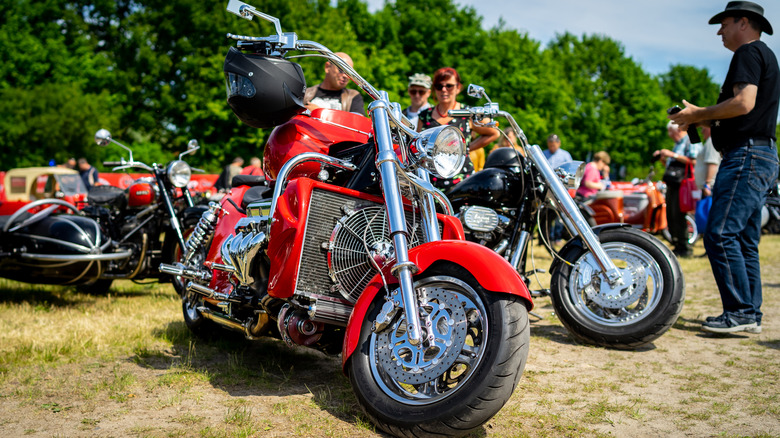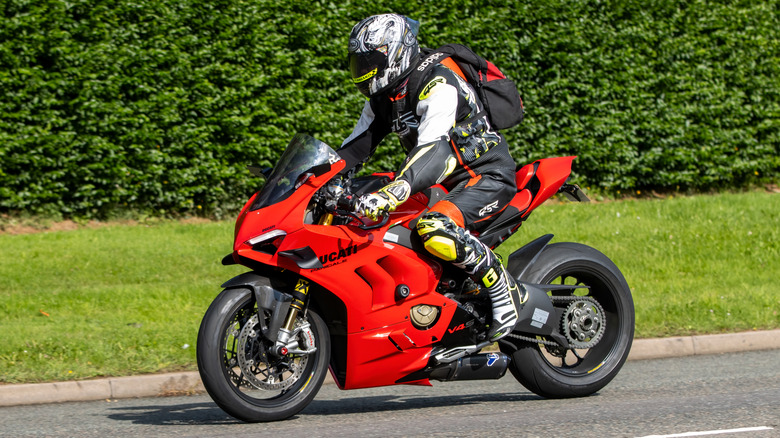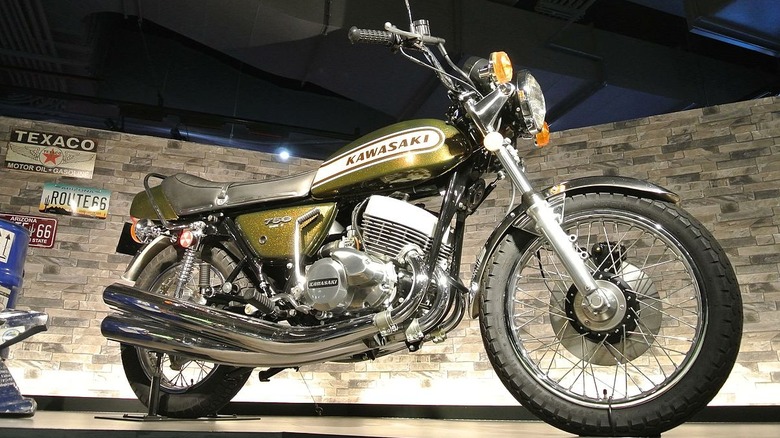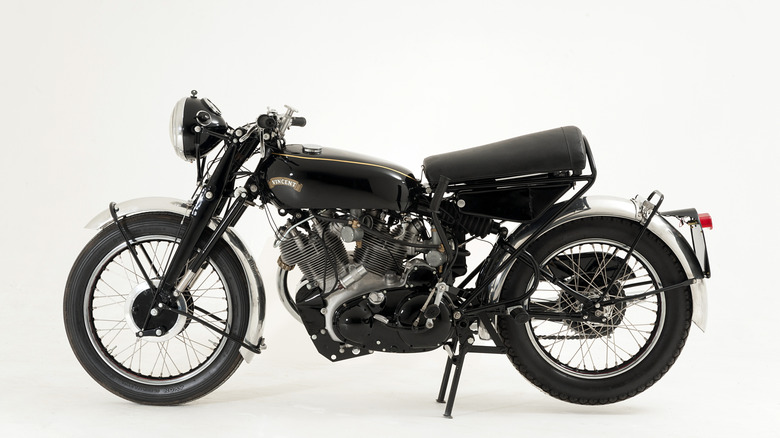5 Of The Most Difficult Motorcycles To Ride
You don't have to be an engineer or a doctor to know that riding a motorcycle is risky business. Many road rockets boast absurd power-to-weight ratios, and lack the safety features typically found in cars. Forget seatbelts, airbags, and roll cages. On a motorcycle, it's just you and the open road. A simple twist of the throttle can be the difference between a Sunday ride and a wallet- or life-altering catastrophe.
An exhaustive study of everything you need to know before picking your first motorcycle could fill a set of encyclopedias, and it is easy to get it wrong. Rookie and veteran bikers alike agonize over whether they are ready to take a step up to that bigger, badder, faster machine. Manufacturers offer dozens of models catering to every style of riding, making it difficult to determine which bikes are forgiving to less experienced riders.
What is not as challenging is identifying motorcycles that are just difficult to ride. Many bikes have earned reputations for being best left to experts. Sometimes this is due to poor design. Other times it's because of outrageous power. Sometimes it's a result of unusual features or dimensions. Whatever the cause, here are five motorcycles that are known as being difficult to ride.
Kawasaki Ninja H2R
The title of fastest production motorcycle in the world has bounced around since Honda kick-started the superbike craze with the 1969 CB750. In the decades since, the title has belonged to Honda's own 1100XX Blackbird and Suzuki's Hayabusa. However, these days Kawasaki has it, with the Ninja H2R.
The top–spec 2025 Ninja H2R ABS is what Kawasaki terms a hyperbike, and for good reason. With a 998cc inline-four cylinder engine complemented by a bespoke supercharger developed by Kawasaki Heavy Industries, the H2R makes 325 hp and 121 lb-ft of torque against a curb weight of 476 pounds. In comparison, the longtime king of the literbikes, Yamaha's YZF-R1M, delivers 200 hp with a curb weight of 448 pounds.
That power-to-weight ratio makes for a motorcycle reserved for only mature and experienced riders, if not outright experts. Anyone who can afford the $59,100 MSRP (plus a destination charge of $815) can take the H2R for a spin, but most probably shouldn't.
The track-only H2R is Kawasaki's halo model, but it's also the head of a family of slightly less insane H2s. Calling the street-legal H2 model accessible only makes sense compared to the H2R. The H2's $32,700 price tag (destination charge: $815) and 240 hp rating only seem reasonable compared to its bigger sibling.
Prepare for the understatement of the century: This motorcycle should not be ridden by beginners. Or even intermediate riders. Or really, anyone at all. Only daredevils who need the fastest production motorcycle in the world between their legs need apply.
Boss Hoss BHC-3 502
The Boss Hoss is the motorcycle equivalent of a Chevelle SS 454. Except it has half the wheels and more displacement. That's right, manufacturer Boss Hoss Cycles has built a two-wheeled conveyance with a larger V8 engine than the most legendary big-block muscle car of all time.
If the H2R piqued your interest, but it seemed a little underpowered and underweight, the Boss Hoss may be for you. This beastly bike tips the scales at 1,354 pounds, thanks in large part to its 502 cubic-inch V8 powerplant. It fills the gap in the market for the millions of motorcyclists around the world who insist that a small-block V8 just isn't enough in their motorcycles.
The outrageous specs of the Boss Hoss make it a tough motorcycle to master, though some claim it is not as intimidating as it may appear. The argument centers on the bike's exceptionally welcoming seating orientation. To be honest, the last thing we want to be on a motorcycle this powerful is comfortable. Complacency is lethal, and beginner riders should probably not even be in the same room as one of these bikes.
The whole affair seems like more of a gimmick than anything, but Boss Hoss Cycles has been sending these things out since 2002. It's difficult to even fathom a human being capable of pushing this machine anywhere near its limits, let alone navigating the learning curve to maneuver it around a parking lot.
Ducati Panigale V4
"I am sore. My hands are blistered, my upper arms are tender, and my lower back feels strained." These are the opening words of Revzilla's review of the 2025 Ducati Panigale V4S, and they speak to one of the primary difficulties of this motorcycle. Intense motorcycling can be a wrestling match, and when performance is top priority, as it is in the Panigale, comfort goes out the window. Supersport bikes have a reputation as being difficult for several reasons. One, which we've already touched on, is high power to low weight. The Ducati Panigale V4 takes that principle and turns it up a notch.
Nestled within an ergonomic triangle the size of a cracker, the Panigale's 1,103cc Desmosedici Stradale V4 engine makes 218 hp and winds out to 16,500 rpm in sixth gear. Slap a race exhaust on it, and it pulls to 237 mph. On a bike like this, a half-inch throttle blip or clutch slip can send all 420 pounds of bike (not to mention rider) cartwheeling down the track like an excited gymnast at her first meet.
From the moment you light up that beautiful Italian engine until you stow it back in the garage, the Panigale is an experience that is not for the faint of heart. Be prepared to be humbled if you ever get a chance to swing a leg over the Panigale.
Kawasaki H2 Mach IV
Known as the Widowmaker, the 1972 Kawasaki Mach IV's 750cc, in-line triple's 74 hp may seem quaint by today's standards. Yet in the 1970s, it was a ripping, snorting beast waiting for a chance to buck off any would-be riders.
The Mach IV would be tough for new or young riders to learn, simply by dint of its old-school kickstart and unusual neutral-at-the-bottom shifting pattern. But what befuddled riders back in the 1970s was its relatively large displacement and a two-stroke powerplant.
Two-stroke street bikes were certainly nothing new in the days before emission crises, though they have since been relegated primarily to off-road or yard work duties. Two-strokes deliver power differently from four-stroke street bikes. A 750cc displacement in a configuration usually reserved for the 50 to 250cc range equals tons of power coming on fast late in the powerband. In other words, the Mach IV might feel like it's limping a bit in low revs, but turns into a banshee once that tach sweeps closer to the red line. Living inside of that power band can be a ton of fun, but it is by no means instinctive, and other parts of the bike, including the suspension, chassis, and tires, weren't up to the task of managing the power.
Many an unwary rider has been caught flat-footed by the sudden, unexpected surge of power delivered by the Mach IV. Kawasaki only built the Mach IV between 1972 and 1975, but that was enough to cement its reputation as one of the most dangerous motorcycles ever made.
Vincent Black Shadow
Everything about the Vincent Black Shadow is difficult. It's even challenging to look at without drooling. Affording one is an insurmountable task for most, with Hagerty calling a price tag of $100,000 a "bargain." But if you can wipe your mouth, study cycling history, and pony up six figures, the Black Shadow is ... still difficult to ride.
Forget the Honda CB750. Vincent Motorcycles earned a reputation beginning in 1928, just before the Great Depression rolled in. By 1948, it had become a world-record holder with a then-stunning 150.3 mph run at Bonneville. That makes it the second bike on this list to earn the title of fastest in the world. Anyone detecting a pattern?
It wasn't just the outright speed of the Black Shadow that made it difficult. The technical nature of a yet-to-be-proven design made it difficult to maintain. A narrow-angle V-twin with dual carbs is downright simplistic today, but by the standards of the time, it was practically rocket science. Difficult and dangerous go hand-in-hand when it comes to motorcycling, so we'll let Hunter S. Thompson, whose idea of fun was larking around with the Hells Angels, explain it best.
"If you rode the Black Shadow at top speed for any length of time," he wrote in Cycle World in 1995, "you would almost certainly die."
